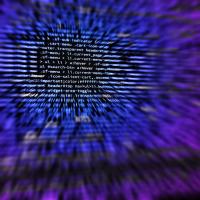Machine Learning and Deep Learning: What's the Difference?

Many people think that machine learning and deep learning are each just a fancy way to say artificial intelligence, but that is a misconception. Both terms represent subsets of AI technology, but they are different, and their differences dictate the functionality and application of these two software solutions.
What is machine learning, and how does it work?
The simplest way to explain machine learning (ML) is that it’s an algorithm that can parse information, analyze it, and then apply the results of the analysis to make an informed decision. Most people interact with machine learning without even knowing it.
For example, let’s say that you wish to build a streaming platform that’s going to feature recommended content based on user preferences. Your software should compare what a user is mostly listening to or viewing, access online data, and then compare this data with the information from other users with similar interests. The result is a list of recommended music or videos that are mostly played by users with similar preferences to the person for whom your software is preparing the list.
Of course, the application of ML algorithms goes beyond recommending entertainment content. It's also useful for security software that needs to scan and deal with online threats, as well as for trading software, which helps a person determine which stocks to buy by predicting their future rise.
The best feature that machine learning provides is a constant learning process. With every bit of new data, the user gets better results.
How does deep learning compare to machine learning?
As opposed to machine learning, which requires initial guidance before it’s capable of making smart decisions on its own, deep learning creates a layered algorithm structure, much like a neural network. This allows deep learning apps to avoid making false predictions, which can happen with machine learning software.
While ML needs to learn constantly to get better, it can return false predictions, and it requires human interaction to avoid these issues. Before deep learning acts on a prediction, the algorithm verifies the validity of the information.
While deep learning makes more logical data parsing, it takes a lot of work before the learning process becomes fully functional. However, once the learning process is complete, there are virtually no limits to the application and effectiveness it offers to users.
Imagine creating a light bulb driven by machine learning that turns on with a certain audio command. In time, the light bulb will go beyond the initial trigger and turn on when similar phrases are spoken or when the context of your speech indicates you require the light bulb to shine.
The verdict
Deep learning is a component of machine learning that has a more complex learning method based on a human neural network. Both solutions are parts of AI technology, and your needs should determine which algorithm you're going to use. Both are fueled by data, so the more information you give the resource, the more useful and reliable its predictions and actions will become.

